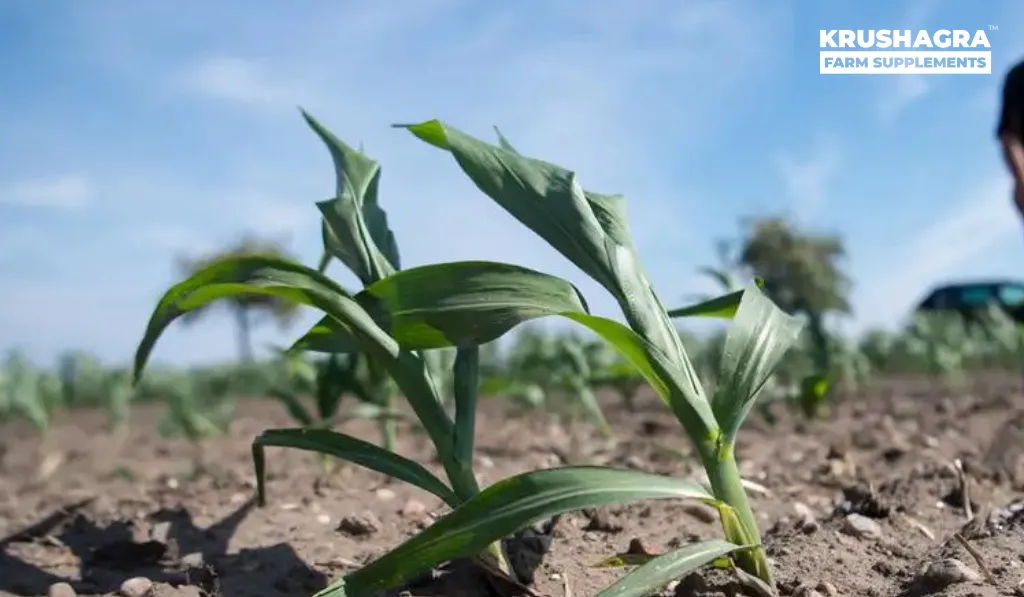Agriculture forms the backbone of India and has been the primary source of income in the country for centuries. In the 21st century, climate change has become a global concern and affects all sectors and industries, primarily agriculture, which is entirely dependent on the rain cycle. India has an agrarian economy, with over 50% of its population depending on farming as the main source of livelihood. Therefore, farmers in India are the most severely impacted by the shifting seasons and climate changes that the world has observed in recent years.
India is one of the most vulnerable countries to climate change, with its agriculture sector facing various challenges like water scarcity, soil degradation, crop diseases, and pest infestations.
One of the key impacts of climate change on agriculture in India is the alteration of cropping patterns. Farmers in different regions of the country are experiencing changes in the timing of seasons, leading to shifts in the sowing and harvesting schedules of crops. For example, in states like Punjab and Haryana, farmers are shifting from traditional crops like wheat and rice to drought-resistant crops like millet and pulses to cope with water scarcity and increasing temperatures.
Effects of Climate Change on Indian Agriculture
Temperature Change
According to the latest data from the Indian Council of Agricultural Research (ICAR), the average temperature in India has increased by about 0.6 degrees Celsius over the last century. According to the Indian Agricultural Research Institute (IARI), the average temperature in India has risen by 0.5°C over the past century, with an increase of 0.2°C per decade since the 1980s. They have also predicted a 1.5°C increase by 2050 and 3.5°C by 2080.
The heat can speed up crop growth, causing them to mature faster than expected. This can lead to a shorter grain filling period, resulting in lower yields. For instance, wheat, a beloved staple in northern India, is extremely sensitive to temperature fluctuations during its grain-filling stage. Research has shown that every degree Celsius rise in temperature can reduce wheat yields by a staggering 4-5%. Similarly, rice, a staple in southern and eastern India, suffers from declining yields as nighttime temperatures rise.
Changes in Rainfall and Water Shortage
Water scarcity is another major challenge Indian farmers face due to climate change. According to the latest data from the Ministry of Agriculture, about 68% of India’s agriculture is rain-fed, making it highly vulnerable to fluctuations in rainfall patterns. In recent years, the country has witnessed an increase in the frequency and intensity of droughts, leading to water shortages for irrigation and crop growth. This has forced farmers to adopt water-saving techniques like drip irrigation and rainwater harvesting to cope with the changing climate.
According to a report by the Ministry of Earth Sciences, the frequency and intensity of extreme rainfall events have increased, leading to floods in some regions and droughts in others. About 80% of the consumable water in India is used up by agriculture. Changes in rainfall also reduce the water availability for irrigation. Groundwater is also severely depleted, especially in regions like Punjab and Haryana, which are dependent on groundwater for irrigation. The Central Ground Water Board reports that groundwater levels are declining by more than 1 meter per year in these states, aggravating the water crisis.
Extreme Weather Events
Floods are a major concern in India due to climate change. Flooding destroys standing crops, erodes topsoil, and wash away precious seeds and nutrients. The 2019 floods in Maharashtra, Karnataka, and Kerala left a trail of destruction, resulting in significant economic losses.
The Bay of Bengal and the Arabian Sea have also seen a surge in the frequency and intensity of cyclones, posing a significant threat to coastal agriculture. These powerful storms bring heavy rainfall and strong winds, which can damage crops. The 2020 cyclone Amphan caused widespread damage to agriculture in West Bengal and Odisha, with estimated losses of over $13 billion.
Changes in Cropping Patterns
Climate change has forced farmers in India to adapt to the shifting season, altering the geographic distribution of crops. Crops that were traditionally cultivated in certain regions are now being shifted to new areas. Many farmers in India are moving away from water-heavy crops like paddy and shifting to millets and sorghum that require less water. Techniques like conservation agriculture, agroforestry, and intercropping are being used to improve soil health and increase resilience to climate change.
In states like Maharashtra and Karnataka, where water scarcity is a growing concern, there’s been a notable shift towards drought-resistant crops such as chickpeas and pigeon peas. Between 2010 and 2020, the area under millet cultivation in Maharashtra increased by nearly 20%.
Himachal Pradesh, traditionally known for its apple cultivation, has now seen a boom in pomegranate and kiwi production, which can be cultivated in warmer temperatures. Apple farmers have moved further north to Jammu & Kashmir owing to the rising temperatures in Himachal Pradesh. Tea growers in Assam are experimenting with shade trees and altering planting times to cope with rising temperatures.
These changes are crucial for sustaining agricultural productivity in the face of climate variability. By diversifying crops and adopting more resilient varieties, Indian farmers are better equipped to manage the challenges posed by climate change.





